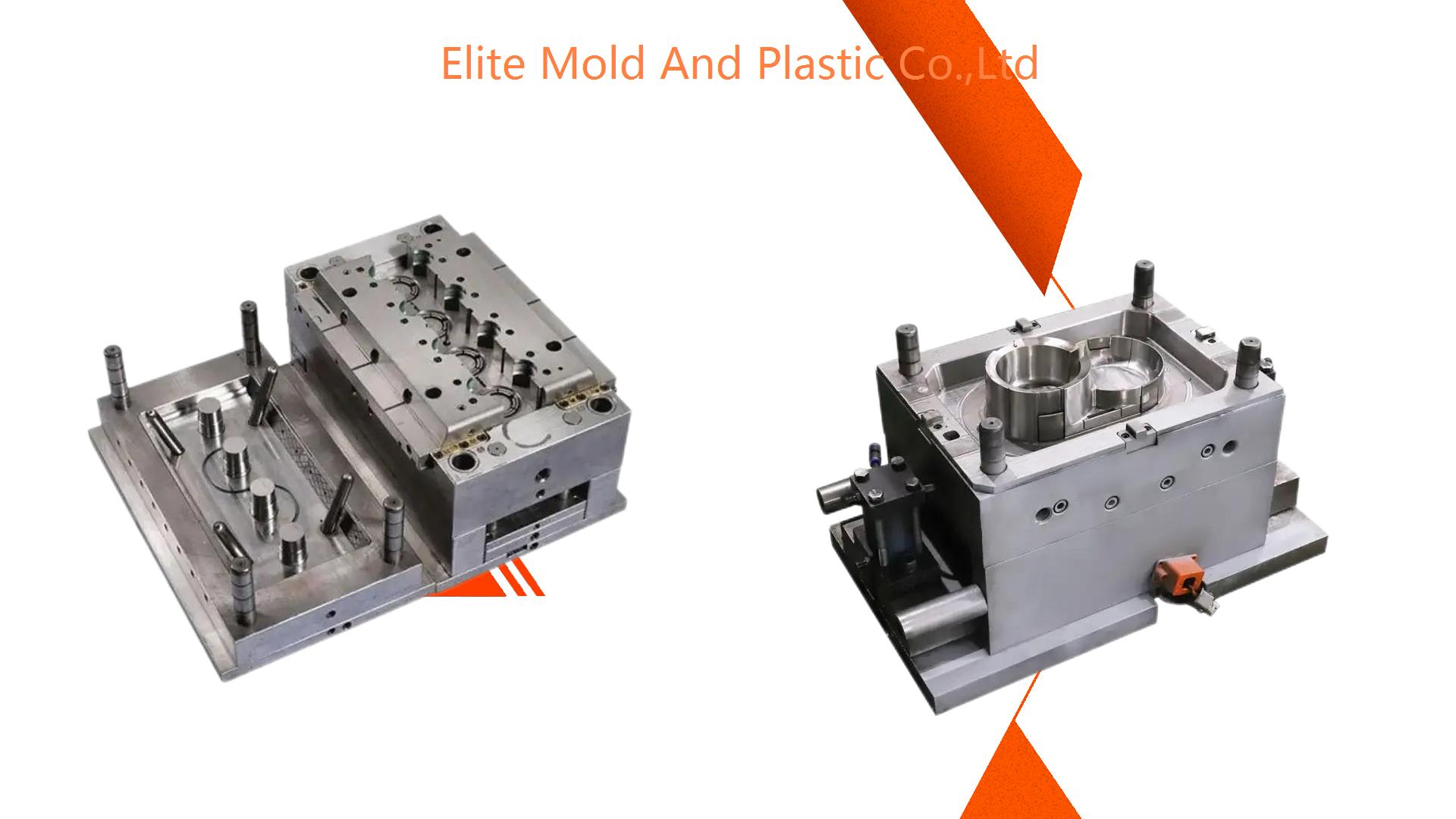Understanding Mold Maintenance: Keep Your Injection Mold in Top Condition
As a leading plastic injection mold manufacturer in China, Elite specializes in delivering high-quality molds and plastic molded parts at competitive prices. To maintain the performance and longevity of these molds, proper mold maintenance is essential. Mold maintenance ensures that injection molds remain in top condition, providing consistent, high-quality parts while minimizing downtime and costly repairs. In this article, we will explore the importance of mold maintenance and how Elite helps clients keep their injection molds performing at their best.
Why Mold Maintenance is Essential
Molds are the foundation of the plastic injection molding process, and their quality directly affects part consistency, production efficiency, and overall manufacturing costs. Over time, molds are subject to wear and tear from constant use, temperature fluctuations, and the injection of molten plastic under high pressure. Without regular maintenance, molds can develop issues that impact the final product’s quality or lead to costly downtime and repairs.
Benefits of Regular Mold Maintenance
- Consistent part quality: Regular maintenance helps prevent defects like flash, warping, or incomplete filling.
- Extended mold lifespan: Proper care reduces wear on the mold, increasing its operational life.
- Reduced downtime: Preventive maintenance minimizes unplanned breakdowns and keeps production running smoothly.
- Lower repair costs: Early detection of issues prevents costly repairs or complete mold replacement.
Key Aspects of Injection Mold Maintenance
At Elite, we follow industry-leading practices to ensure that every mold remains in top condition throughout its lifespan. The mold maintenance process involves several critical steps, each designed to prevent common issues and maintain the integrity of the mold.
1. Cleaning the Mold
Importance of Regular Cleaning
Over time, contaminants such as plastic residue, rust, and mold release agents can accumulate on the mold surface. These contaminants can affect part quality, cause sticking during ejection, and increase wear on the mold.
- Removing plastic residue: Plastic buildup can occur, especially around gates, runners, and cavities. Cleaning these areas ensures proper material flow and prevents defects.
- Preventing rust: Rust can develop due to moisture in the environment or during cooling. Regular cleaning with anti-rust agents helps protect the mold's surface.
- Maintaining surface finish: Cleaning ensures that the mold maintains a smooth, polished surface, which is critical for producing parts with excellent surface finishes.
At Elite, we use high-quality cleaning agents and tools to ensure that every mold remains free of contaminants, preserving part quality and mold performance.

2. Inspecting Critical Mold Components
Identifying Wear and Damage
Routine inspections allow manufacturers to identify early signs of wear or damage to critical mold components, such as the cavity, core, ejector pins, and cooling channels.
- Cavity and core inspection: These components form the part’s shape. Any wear, scratches, or dents can lead to dimensional inaccuracies or part defects.
- Gate and runner system inspection: Gates and runners must be free from obstructions and damage to ensure proper material flow. Any blockages or wear can impact part quality.
- Ejector system inspection: Ejector pins and sleeves must function smoothly to remove parts without damaging them. Regular inspection ensures they are in good condition and properly aligned.
- Cooling channel inspection: Cooling channels play a critical role in regulating the mold’s temperature. Any blockage or wear can lead to uneven cooling, causing warping or inconsistent part quality.
At Elite, we conduct thorough inspections of all mold components, ensuring that any issues are identified and addressed before they affect production.
3. Lubrication of Moving Parts
Ensuring Smooth Operation
Injection molds have several moving components, including ejector pins, slides, lifters, and guide pins, that require regular lubrication to prevent friction and wear. Proper lubrication ensures that these components operate smoothly and without unnecessary strain on the mold.
- Ejector pin lubrication: Lubricating ejector pins helps prevent sticking or improper ejection of parts.
- Slide and lifter lubrication: Slides and lifters are responsible for handling complex part geometries, such as undercuts. Regular lubrication ensures that these mechanisms move smoothly without wear.
- Guide pin lubrication: Guide pins ensure the precise alignment of the mold halves during the clamping and injection process. Proper lubrication prevents wear and ensures accurate alignment.
At Elite, we use high-quality lubricants to maintain the smooth operation of all moving parts, reducing wear and increasing the mold’s lifespan.
4. Mold Storage and Protection
Protecting Molds During Idle Periods
Proper storage of molds is essential to prevent damage, rust, or contamination when they are not in use. Molds should be stored in a controlled environment to ensure they remain in optimal condition between production runs.
- Anti-rust protection: Applying anti-rust agents before storage prevents moisture from causing rust on the mold surface.
- Proper environmental conditions: Molds should be stored in a dry, temperature-controlled environment to prevent rust or condensation buildup.
- Protective covers: Using protective covers or cases shields the mold from dust, debris, and potential damage during storage.
At Elite, we ensure that molds are stored properly when not in use, preventing damage and ensuring that they are ready for the next production run.
5. Preventive Maintenance Schedule
Establishing a Regular Maintenance Routine
A well-planned preventive maintenance schedule helps identify potential problems early and ensures that the mold remains in excellent working condition over time. The frequency of maintenance depends on factors such as production volume, part complexity, and the materials used.
- Regular inspection intervals: Molds should be inspected after a set number of production cycles to check for wear, contamination, or damage.
- Tracking wear: Monitoring wear on critical components helps plan for replacement or repair before production is affected.
- Documentation: Keeping detailed records of each maintenance activity helps track mold performance and identify patterns or recurring issues.
At Elite, we create customized preventive maintenance schedules for each mold, ensuring that maintenance is performed at optimal intervals to keep molds running smoothly.
Common Mold Maintenance Issues and Solutions
Even with proper maintenance, injection molds can encounter certain issues over time. Here are some common mold problems and how Elite addresses them:
1. Flash
Flash occurs when molten plastic escapes from the mold cavity due to gaps between the mold halves. This defect can be caused by wear on the mold’s parting line or improper clamping.
- Solution: Regularly inspect and maintain the mold’s parting line to ensure a tight seal. Adjust clamping force as needed to prevent gaps during the injection process.
2. Warping
Warping is caused by uneven cooling or improper mold design, leading to distorted parts.
- Solution: Ensure that the cooling channels are clean and functioning properly. Optimizing the cooling system during mold design can help prevent warping in complex parts.
3. Sticking During Ejection
Parts sticking to the mold during ejection can be caused by worn ejector pins, improper mold release agents, or insufficient draft angles.
- Solution: Regularly lubricate ejector pins and inspect them for wear. Adjust the draft angle during mold design to improve part ejection and use appropriate mold release agents.
Conclusion
Mold maintenance is crucial for maintaining the performance, durability, and efficiency of injection molds. At Elite, we take mold maintenance seriously, using best practices such as regular cleaning, inspection, lubrication, and proper storage to keep molds in top condition. By investing in regular maintenance, manufacturers can ensure consistent part quality, minimize downtime, and extend the life of their molds.
If you are looking for expert mold maintenance services or need high-quality injection molds and molded parts, Elite is here to help. Contact us today to learn more about how we can support your production needs with top-tier molds and comprehensive maintenance solutions.
Related news
Our Certificates
By co-operating with Elite Mold, you have selected one of the most reliable ISO 9001 certified plastic mold manufacturer, Elite Mold as a plastic injection mold manufacturer specializing in plastic injection mold and supplying plastic injection molding services for plastic mold design, prototype makings, mold flow analysis, precise machining, OEM services, ODM services and so on, building custom plastic injection molding. We are committed to enhance the Process optimized and quality of service, shorten lead time and assist in lowering inventory, by providing new products every year to bring in continuous and higher profits for our clients. The ability to produce mold at the International standard, strong engineering and mold design capability, aggressive delivery, competitive pricing and business integrity continues to be the success factor of Elite Mold.










